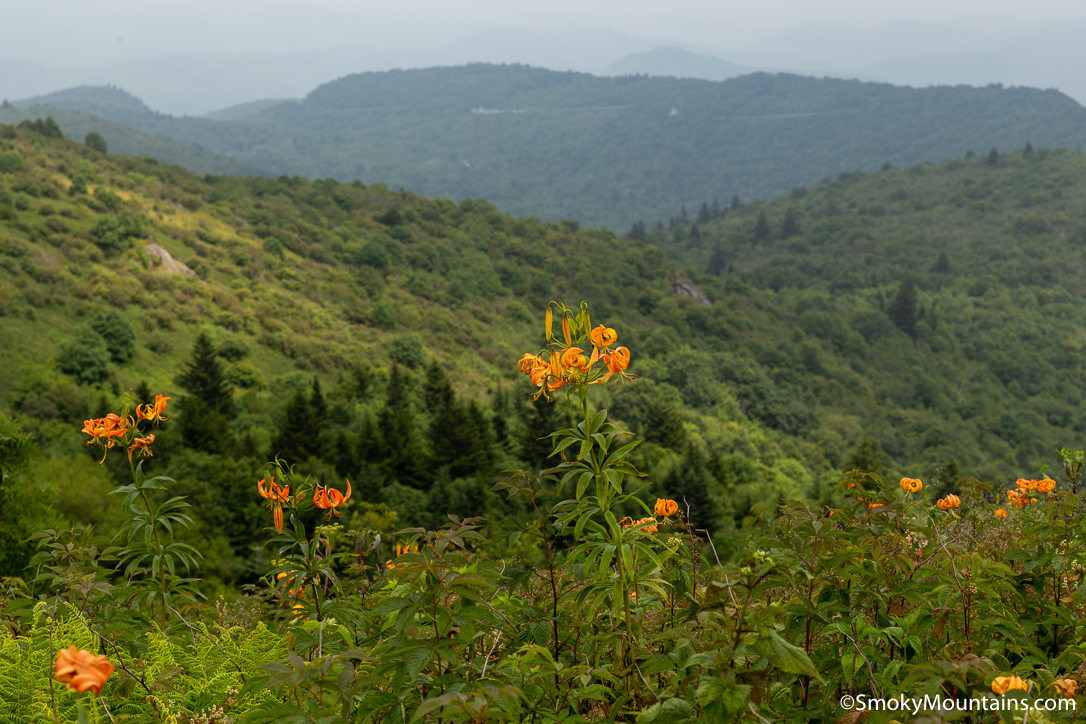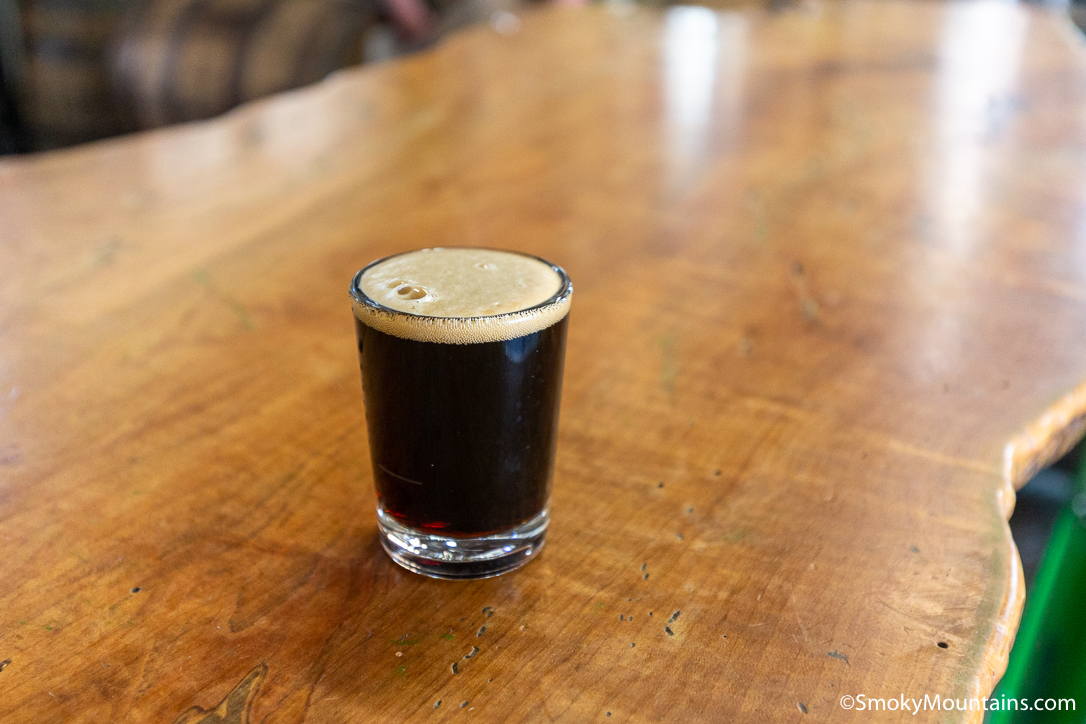Asheville, North Carolina is one of the top mountain towns in the U.S., more like some Colorado or Montana hamlet than most other Eastern cities. That’s on account it comes surrounded by the tallest ranges of the Southern Appalachians.
To the northeast rise the Black Mountains, the Great Craggies, and the Roan Highlands. To the west, the Great Smoky Mountains and Plott Balsams loom, while the Great Balsam Mountains command the southwest. And those are only the very highest mountain blocks. There are plenty of other impressive heights close by, including the Elk Mountains and the Pisgah Ridge.
This means that big-time “peak-bagging” is easy to pursue with an Asheville home base. In this post, we’ve rounded up some—just some, you hear?—of the grand summits within day-tripping distance of town. We’ll kick off with the tallest of all, but other than that we’ve arranged these must-see mountaintops in no particular order.
Mount Mitchell

Photo Credit: @_wata_
At 6,684 feet, Mount Mitchell reigns supreme as the highest peak in the eastern mainland of North America. (Some mountains in Arctic Canada’s archipelago rise higher.) Mitchell crowns the Black Mountains, named for the spruce-fir forests cloaking their ridge crests and summits and containing seven major peaks above 6,000 feet. (They include 6,647-foot Mount Craig, the East’s second-highest mountain.)
Known to the Cherokee as Attakulla and to early white settlers as Black Dome, Mount Mitchell is the centerpiece of Mount Mitchell State Park, the oldest in North Carolina. Drive up to the top and take the short paved path to panoramic views from the summit observation deck, or tackle a more ambitious climb via the 4.4-mile (round-trip) Old Mitchell Trail starting at the park headquarters.
Waterrock Knob
Nestled between the more massive Great Smokies and Great Balsams, the Plott Balsam Mountains are the fourth-loftiest range in the East. You can hoof it to their apex, 6,292-foot Waterrock Knob, via a short, steep trail right off the Blue Ridge Parkway. The trailhead’s the Waterrock Knob Visitor Center less than an hour from Asheville. Its parking area serves up awesome views—better even than the summit, given fewer obscuring trees—with the high peaks of the Great Smokies and the Great Balsams on opposite skylines. Other Plott Balsam peaks, including Browning Knob (6,088 feet) and Yellow Face (6,032 feet), seem close enough to touch.
A half-mile of huffing and puffing takes you to the Waterrock summit and the bragging rights that come with topping out in the Plott Balsams. (The range, by the way, comes named after Henry Plott and his settler family, also the inspiration for the name of North Carolina’s state dog: the Plott Hound, originally bred regionally for bear-hunting.)
Roan Mountain
Among the most extraordinary corners of the Southern Appalachians in Asheville’s big backyard are the Roan Highlands, the highest part of the Unaka Range between the Nolichucky and Watauga rivers. And the crown of the Roan Highlands is Roan Mountain, a truly spectacular place.
Roan Mountain is what physical geographers call a “massif”: a mountain containing multiple subpeaks. It’s a ridge complex encompassing High Bluff, Round Bald, Jane Bald, Grassy Ridge, and the ultimate high point of 6,286-foot Roan High Knob. Grassy Ridge, by the way, is the northernmost of the so-called “Southern Sixers”: the many dozen Southern Appalachian peaks exceeding 6,000 feet in elevation.
Hiking Roan Mountain makes one of the classic Southern Appalachian adventures. Here you’ll find numerous extensive grassy balds serving up sweeping views and eye-popping early-summer rhododendron blooms. Indeed, those high rhododendron thickets, or “slicks,” are the most famous feature of the Roan Highlands.
Mount Pisgah

A linchpin of Asheville’s skyline, 5,721-foot Mount Pisgah is also one of the closest major summits to downtown. A three-mile round-trip trek takes you to its capping transmission tower and observation platform from a trailhead on Little Pisgah Mountain in the Pisgah National Forest.
You’ve got knockout views to enjoy atop Mount Pisgah, including a bird’s-eye look at Asheville itself. Many notable peaks also fall within the viewshed, including Cold Mountain and Shining Rock in the Great Balsam Mountains, iconic Looking Glass Rock, and Fryingpan Mountain.
Bearwallow Mountain
Only 20 miles or so from downtown Asheville, 4,232-foot Bearwallow Mountain provides another first-rate summit-hike outing amid Blue Ridge splendor. Overlooking the Hickory Nut Gorge, the bare peak—topped by a historic fire tower—delivers fabulous sightlines to the Black Mountains, the Great Balsams, the Pisgah Ridge, and other landmarks.
You can reach the top of Bearwallow Mountain by a two-mile round-trip trail. You can also weave it into a longer circuit by combining your peak-bagging ramble with the wonderful Trombatore Trail, which reaches the view-rich meadows of Blue Ridge Pastures—where you’ll have a nice prospect of Bearwallow, by the way!
Hawksbill Mountain

Any outdoor enthusiast visiting Asheville ought to consider a visit to the Linville Gorge, touted as “the Grand Canyon of the Southeast” and certainly one of the chief chasms of the eastern U.S. Forming an iconic profile along its eastern rim is 4,009-foot Hawksbill Mountain, summitable via a moderate 1.5-mile round-trip hike off Table Rock Road.
Included within the expansive Linville Gorge Wilderness, Hawksbill rewards its climbers with dazzling panoramas. It’s thrilling to look down into the mighty forested canyon, including the pour-off of Linville Falls, and along the rim to other promontories such as Table Rock Mountain and Shortoff Mountain. Farther out, defining features of the Southern Appalachians stud the skyline, including the Black and Great Balsam mountains, the Roan Highlands, and Grandfather Mountain.
Max Patch

Photo Credit: @e.ducan_
The 4,600-foot grass bald known as Max Patch (or, in local shorthand, simply “the Patch”) provides one of the most celebrated panoramas in the Southern Appalachians—and probably the entire eastern U.S., given it’s arguably the top vantage along the Appalachian Trail. The best-known destination in the Bald Mountains, the wide-open height of the Patch offers fantastically far-reaching views, including the lion’s share of Southern Sixers in the Black Mountains, Great Craggies, Great Smokies, Great Balsams, and Roan Highlands. It’s yours to goggle over (maybe with an unforgettable high-country picnic) via a steep but very reasonable 1.5-mile round-trip hike.
Black Balsam Knob

It’s a no-sweat, 1.4-mile round-trip hike up the Art Loeb Trail off the Blue Ridge Parkway to reach the second-highest peak in the Great Balsam Mountains: 6,214-foot Black Balsam Knob. (The high point of the Great Balsams is 6,410-foot Richland Balsam, which depending on your definitions is the 10th-highest peak in the East.) As at Max Patch, Black Balsam Knob’s grass bald provides quite the vantage for sightlines over the superb high country of the Tennessee-North Carolina borderlands.
Looking Glass Rock
The prominence and the huge rounded cliff faces of 3,969-foot Looking Glass Rock make it an easily identifiable (and much-photographed) landmark in many viewsheds all around Asheville’s mountainous neighborhood. Looking Glass Rock is a “pluton,” a body of granitic rock that formed from a great mass of magma cooled underground and now stands exposed by uplift and erosion.
You can get up-close looks at Looking Glass’s huge, pale outcrops on a demanding 6.4-mile round-trip hike to the top. A slew of switchbacks through mixed woods—including fine stands of Carolina hemlock—help moderate the elevation gain. The views from this standalone monolith are, as you might imagine, incredible.
More Peak-Bagging Opportunities Around Asheville

We’ve had to leave off many fine mountaintops within easy reach of Asheville, from Fryingpan Mountain and Craggy Pinnacle to the downright legendary Cold Mountain in the Great Balsams and the Grandfather Mountain massif, climax of the Blue Ridge. But the above nine should get your summit fever firing!




